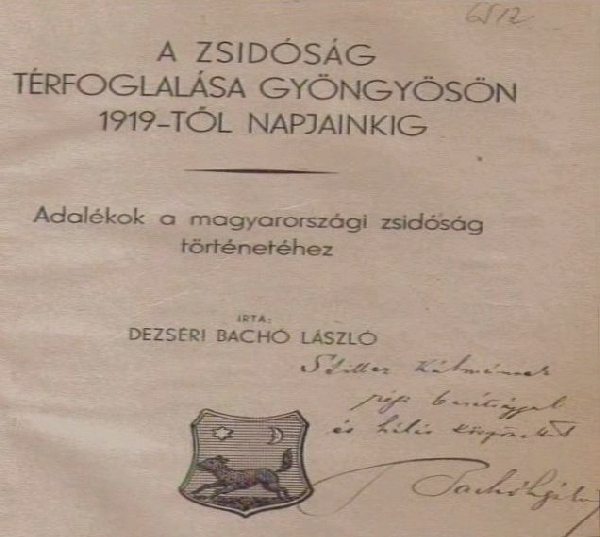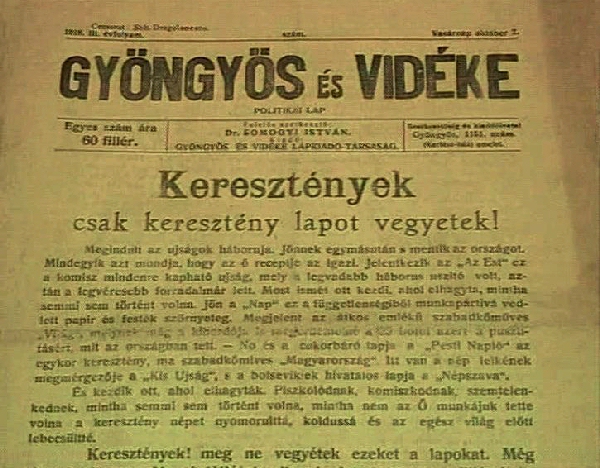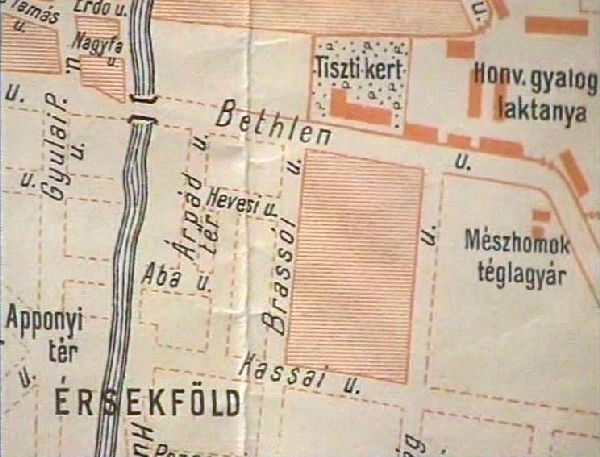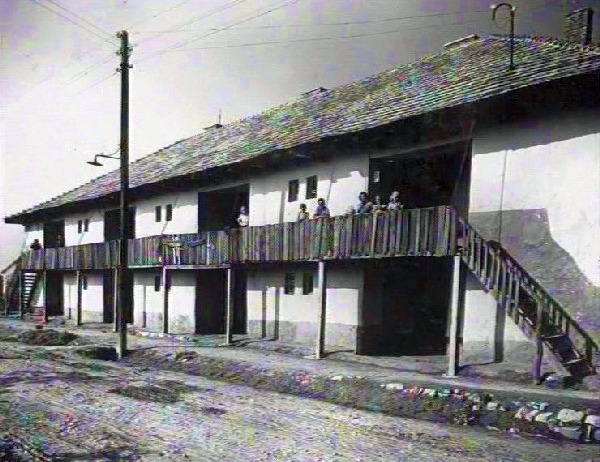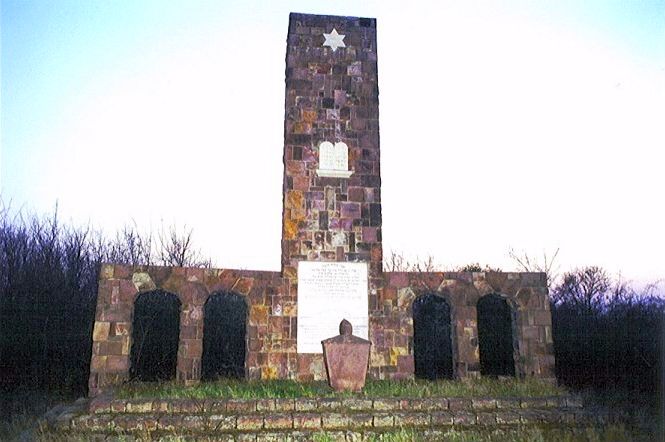| NAME |
Year of Birth |
NAME |
Year of Birth |
NAME |
Year of Birth |
| *, Gyula |
1893 |
HELLER, Jozsef |
1908 |
REISS, Ferencné |
1899 |
| ABRAHAM, Imre |
1925 |
HELLER, Samuel |
1901 |
REISZMANN, Lajos |
1924 |
| ABRAHAM, Jozsef |
1923 |
HELLSCHEIN, Antal |
1905 |
RETI, Edit |
1921 |
| ADAM, Miklos |
1899 |
HERCZ, Lajosné |
1894 |
REVESZ, Janosné |
1909 |
| ANCSELOVICS, Marton |
1917 |
HERCZ, Laszlo |
1915 |
REVESZ, Lajosne Dr. |
1897 |
| BALASSA, Imrené |
1904 |
HERSKOVITS, Alfred |
1920 |
RIEGLER, Jenoné |
1912 |
| BALAZS, Geza |
1880 |
HERSKOVITS, Borbala |
1924 |
ROSENBERG, Zsigmondné |
1889 |
| BALAZS, Geza |
1880 |
HERZ, Arpadné |
1902 |
ROSENFELD, Lipot |
1878 |
| BALINT, Miklos |
1897 |
HERZ, Emanuelné |
1880 |
ROSENFELD, Simonné |
1887 |
| BANO, Ernoné |
1895 |
HEVESI, Istvan |
1921 |
ROTH, Siegfried Dr. |
1915 |
| BANYASZ, Miksané |
1879 |
HEVESI, Katalin |
1926 |
RUSZ, Lipot |
1878 |
| BASS, Gezané |
1883 |
HIRSCH, Bela |
1894 |
RUSZ, Lipotné |
1883 |
| BERKOVICS, Endre |
1901 |
HOCHWALD, Imre |
1914 |
SARAI, Sandor |
1874 |
| BERLINER, Dezso |
1903 |
HOFFMANN, Laszlo |
1922 |
SASVARI, Morné |
1903 |
| BERLINER, Lajos |
1904 |
HOFFMANN, Miksa |
1893 |
SCHAAR, Agnes |
1912 |
| BERMANN, Dezsoné |
1910 |
HOLCZER, Zoltanné |
1927 |
SCHLESINGER, Samuelné |
1889 |
| BERNFELD, Mor |
1860 |
HOLLANDER, Katalin |
1919 |
SCHNITZLER, Elemerné |
1903 |
| BINET, Manoné |
1885 |
HUSZAR, Berta |
1889 |
SCHONFELD, Ervin |
1924 |
| BINETER, Bela Dr. |
1907 |
ICKOVITS, Bernat |
1919 |
SCHWARCZ, Erno |
1904 |
| BIRINGER, Ernoné |
1887 |
ILYOVITS, Miklos |
1913 |
SCHWARCZ, Janosné |
1911 |
| BISCHITZ, Erno |
1903 |
IZSAK, Jakab |
1871 |
SCHWARCZ, Jozsef |
1913 |
| BLAU, Imre |
1894 |
JAKOBOVITS, Karoly |
1910 |
SCHWARCZ, Lipotné |
1896 |
| BLAU, Imre |
1894 |
JAKUBOVICS, Dezso |
1901 |
SCHWARCZ, Roza |
1893 |
| BLUMENTHAL, Lajos |
1896 |
JAKUBOVICS, Miklosné |
1921 |
SCHWARTZ, Dezso |
1901 |
| BODNAR, Kornelné |
1884 |
JONAS, Pal |
1912 |
SCHWARTZ, Ferenc |
1904 |
| BOGDAN, Laszlo |
1911 |
JONAS, Sandorné |
1909 |
SCHWARTZ, Kalman |
1905 |
| BOGDANY, Laszlo Dr. |
1901 |
JUNGREISZ, Tibor |
1921 |
SCHWARTZ, Samuelné |
1873 |
| BORGER, Ignacné |
1879 |
KAHAN, Sandor |
1924 |
SCHWEIGER, Jozsef |
1865 |
| BOROCZ, Karolyné |
1893 |
KAHAN, Tibor |
1922 |
SCHWEIGER, Lajos |
1924 |
| BOROS, Morné |
1863 |
KALDOR, Vilmosné |
1884 |
SCHWEIGER, Sandorné |
1885 |
| BOSKOVITZ, Jozsefné |
* |
KARDOS, Bela |
1892 |
SCHWEITZER, Ivanné |
1904 |
| BRAUN, Oszkarné |
1898 |
KARDOS, Ferenc |
1910 |
SEIDNER, Jeno |
1892 |
| BRUCK, Miklos |
1906 |
KARDOS, Miklos |
1896 |
SEIDNER, Jeno |
1896 |
| BRUCK, Sarolta |
1933 |
KARDOS, Sandor |
1882 |
SEMLER, Ignacné |
1897 |
| CZAKO, Palné |
1905 |
KARDOS, Sandorné |
1906 |
SIMON, Aronné |
1883 |
| CZEISLER, Imre |
1912 |
KELEMEN, Gyulané |
1884 |
SIMONOVITS, Laszlo |
1912 |
| CZEISLER, Karoly |
1915 |
KELLER, Antal |
1865 |
SINGER, Gyulané |
1898 |
| CZINK, Helen |
1915 |
KELLER, Laszlo |
1902 |
SINGER, Lajosné |
1871 |
| CZIPSZER, Lajos |
1903 |
KENDE, Jeno |
1889 |
SINGER, Lajosné |
1878 |
| DENES, Istvan |
1919 |
KERENYI, Jeno Dr. |
1899 |
SIPOS, Jenoné |
1899 |
| DEUTSCH, Belané |
1912 |
KERTESZ, Gyorgy |
1907 |
SOLTESZ, Jozsefné |
1865 |
| DEUTSCH, Gyorgy |
1914 |
KERTESZ, Katalin |
1877 |
SOMLO, Emil |
1896 |
| DEUTSCH, Gyorgy |
1914 |
KESTENBAUM, Lajos |
1907 |
SONNENSCHEIN, Imre |
1908 |
| DEUTSCH, Jozsefné |
1885 |
KIS, Adolf |
1871 |
SONNENSCHEIN, Tibor |
1912 |
| DOMANY, Tibor Dr. |
1892 |
KIS, S.Sandorné |
* |
SPATZ, Miklosné |
1921 |
| DOZSA, Henrikné |
1880 |
KISS, Laszlo |
1909 |
SPITZER, Lajosné |
* |
| ECKSTEIN, Hermann |
1902 |
KISS, Laszloné |
1917 |
STARK, Sandorné |
1888 |
| EGRI, Adolfné |
1867 |
KLEIMANN, Livia |
1926 |
STECKLER, Jenoné |
1895 |
| EHRENFELD, Ignac |
* |
KLEIN, Belané |
1894 |
STEINER, Erno |
1924 |
| EICHLER, Albertné |
1897 |
KLEIN, Gyorgy |
1928 |
STEINER, Lajosné |
1907 |
| ENGEL, Ignacné |
1882 |
KLEIN, Imre |
1909 |
STEINER, Miksané |
1893 |
| ENGLANDER, Ferencné |
1888 |
KLEIN, Jozsefné |
1892 |
STEINREICH, Roza |
1915 |
| ERDOS, Imre |
1914 |
KLEIN, Miklos |
1907 |
STERN, Imre |
1881 |
| ERDOS, Istvan |
1912 |
KOHN, Jolan |
1882 |
SUGAR, Laszloné |
1918 |
| ERDSTEIN, Elemer |
1909 |
KOHN, Lipot |
1884 |
SZABADOS, Andorné |
1898 |
| ERDSTEIN, Jakabné |
1866 |
KONIG, Katalin |
1915 |
SZABO, Gyula |
1893 |
| FABIAN, Karolyné |
1873 |
KORNSTEIN, Zoltan |
1890 |
SZABO, Istvan |
1922 |
| FALK, Edené |
1876 |
KOSA, Vilmosné |
1898 |
SZEKELY, Dezso |
1876 |
| FANNFEDER, Martonné |
1908 |
KOVACH, Dezsoné |
1878 |
SZEKELY, Dezsone Dr. |
1882 |
| FANNFEDER, Zsuzsanna |
1923 |
KOVACS, * |
1897 |
SZEKELY, Janos Dr. |
1912 |
| FARAGO, Laszloné |
1910 |
KOVACS, Gyorgy |
1917 |
SZEKELY, Jenoné |
1880 |
| FARKAS, Dezso |
1886 |
KRAUSZ, Andor |
1901 |
SZEKELY, Laszlo |
1900 |
| FARKAS, Imre |
1899 |
KRAUSZ, Gyorgy |
1919 |
SZEKELY, Nandor |
1875 |
| FARKAS, Jozsefné |
1870 |
KRESCH, Sandor |
1911 |
SZENES, Adolfné |
1872 |
| FERI, Sandor Dr. |
1895 |
KUPFERSTEIN, Vilmosné |
1885 |
SZILAGYI, Istvan |
1901 |
| FISCHER, Andras |
1915 |
KURSCHNER, Ignac |
1884 |
SZINYOVSZKY, Miklosné |
1924 |
| FISCHER, Belané |
1898 |
KURT, Gyorgy |
1918 |
SZIRMAI, Karoly |
1910 |
| FISCHER, Lajosné |
1869 |
LAKNER, Dezsoné |
1909 |
SZIRMAI, Laszlo Dr. |
1908 |
| FLEISCHMANN, Gyorgy |
1908 |
LEDERER, Jenoné |
1880 |
TABAK, Samuné |
1884 |
| FLOHR, Imre |
1912 |
LICHTENSTEIN, Lajos |
1892 |
TEBNER, Arpad |
1909 |
| FOGEL, Istvan |
1911 |
LICHTENSTEIN, Roza |
1871 |
TEBNER, Jeno |
1911 |
| FOLDES, Sandor |
1920 |
LOBL, Jozsefné |
1919 |
TEBNER, Jeno |
1913 |
| FOLDES, Tivadarné |
* |
LOVI, Imre |
1901 |
TOROK, Samuelné |
1903 |
| FORBAT, Manoné |
1889 |
LOWINGER, Palné |
1893 |
TOTISZ, Sandorné |
1875 |
| FORSTER, Lipot |
1884 |
LUSZTIG, Laszlo |
1922 |
TRATTNER, Endre |
1914 |
| FRADD, Gyulané |
1897 |
MAHLER, Marton |
1909 |
TRATTNER, Jakabné |
1888 |
| FRANKEL, Tiborné |
1923 |
MANDL, Ferenc |
1915 |
TRATTNER, Magda |
1916 |
| FRANKL, Erno |
1899 |
MANDL, Marton |
1878 |
TREPPER, Dezso |
1920 |
| FRANKL, Pal |
1920 |
MANDL, Marton |
1903 |
TUSCHAK, Gyorgy |
1916 |
| FRIED, Janosné |
1916 |
MANDL, Roza |
1865 |
VAGO, Davidné |
1890 |
| FRIEDMANN, Jozsefné |
1897 |
MARCZELL, Aladarné |
1879 |
VAJNA, Dezso |
1881 |
| FRIEDMANN, Miklosné |
1870 |
MARKO, Karolyné |
1874 |
VAMOS, Hugo |
1886 |
| FROSTER, Samuel |
1872 |
MARKUS, Samuelné |
1883 |
VAMOS, Hugoné |
1886 |
| FUCHS, Jozsef |
1893 |
MARTON, Oszkar |
1905 |
VARGA, Gyula |
1896 |
| FUREDI, Miksa |
1875 |
MESTER, Ivanné |
1911 |
VARLAKI, Albert |
1920 |
| GARAI, Aladarne Dr. |
1886 |
MEZEI, Andor Dr. |
1911 |
VARSA, Imrené |
1875 |
| GELB, Jozsef |
1898 |
MEZEI, Manone Dr. |
1890 |
VAS, Zsigmond |
1890 |
| GELLERT, Jakab |
1872 |
MILHOFER, Alfredné |
1882 |
VEGHAZY, Istvan Dr. |
1923 |
| GERO, Armin Dr. |
1871 |
MITTELMANN, Laszlo |
1918 |
VERMES, Arnoldné |
1883 |
| GLUCK, Ernone Dr. |
1888 |
MOLNAR, Lajosne Dr. |
1900 |
VERTES, Miklos |
* |
| GODA, Erno |
1892 |
MOLNAR, Zoltan |
1920 |
VERTES, Sandor |
1906 |
| GOLDSCHMIED, Laszloné |
1901 |
MONTAG, Laszlo |
1910 |
VIDOR, Rezso Dr. |
1887 |
| GOMBOS, Gyulane Dr. |
1895 |
MOSKOWITZ, Morné |
1890 |
VIDOR, Samuné |
1868 |
| GRAUMANN, Arnold |
1893 |
MULLER, Gyulané |
1878 |
VIRAG, Hugoné |
1884 |
| GROSSZMANN, Lajosné |
1912 |
MULLER, Sandor |
1902 |
WALDMANN, Imre |
1914 |
| GROSSZMANN, Miklos |
1921 |
MULLER, Sandor |
1902 |
WALDMANN, Jeno |
1913 |
| GROSZBERG, Lipotné |
1869 |
NAGY, Pal |
1920 |
WALDMANN, Jozsef |
1911 |
| GRUN, Laszlo |
1907 |
NELKEN, Jozsef |
1893 |
WALDNER, Alfred |
1911 |
| GRUN, Laszlo |
1910 |
NETTLER, Agnes |
1925 |
WALDNER, Bela |
1888 |
| GRUN, Miksa |
1903 |
NEUMANN, Bela |
1888 |
WALDNER, Gyula |
1893 |
| GRUNBAUM, Roza |
1887 |
NEUMANN, Bertalanné |
1866 |
WALDNER, Karoly |
1917 |
| GRUNBAUM, Sandor |
1907 |
NEUMANN, Jeno |
1916 |
WALDNER, Pal |
1919 |
| GRUNFELD, Elemer |
1906 |
NEUMANN, Miksané |
1878 |
WALDNER, Zsuzsi |
1928 |
| GRUNFELD, Sandor |
1920 |
NEUWIRTH, Ferencné |
1907 |
WEINBERGER, Ignacné |
1887 |
| GRUNFELD, Tivadar |
1918 |
NUSSBAUM, Pal |
1912 |
WEINBERGER, Jakabné |
1872 |
| GRUNHUT, Bela |
1911 |
OSZTERREICHER, Elemer |
1919 |
WEINER, Sandorné |
1898 |
| GRUNHUT, Miklos |
1909 |
PARTOS, Dezsoné |
1883 |
WEISZ, Ferenc |
1910 |
| GRUNWALD, * |
1910 |
PASZTOR, Jozsef |
1910 |
WEISZ, Ferenc |
1934 |
| GUTTMANN, Mor |
1863 |
PASZTOR, Miklos |
1912 |
WEISZ, Gyorgy |
1903 |
| GYARMATI, Arturné |
1880 |
PFEIFER, Emilné |
1898 |
WEISZ, Gyula |
1920 |
| GYONGYOSI, Dezso |
1885 |
PICK, Belané |
1883 |
WEISZ, Imrené |
1891 |
| GYONGYOSI, Nandor Dr. |
1891 |
POLLACSEK, Jeno |
1913 |
WEISZ, Jozsef |
1901 |
| GYORGY, Lipot Dr. |
1881 |
POLLAK, Istvan |
1909 |
WEISZ, Mihalyné |
1889 |
| GYOZO, Zoltan |
1888 |
PRINCZ, Miksané |
1889 |
WEISZ, Miklos |
1905 |
| GYOZO, Zoltanné |
1894 |
PROTOVIN, Bela |
1913 |
WEISZ, Sandor |
1922 |
| HABER, Andor |
1920 |
PROTOVIN, Geza |
1915 |
WEISZENSTEIN, Jozsefné |
1888 |
| HABER, Bela |
1908 |
PROTOVIN, Gyula |
1910 |
WEISZMANN, Miklosné |
1886 |
| HABER, Ferenc |
1903 |
REDLICH, Ilona |
1905 |
WERTHEIMER, Jozsefné |
1907 |
| HABER, Karoly |
1916 |
REICH, Gyulané |
1881 |
WIDDER, Zoltanné |
1906 |
| HALASZ, Andor |
1913 |
REINER, Bela |
1901 |
WIENER, Gyorgy |
1909 |
| HALASZ, Arminné |
1869 |
REINER, Gabor |
* |
WIESEL, Davidné |
1878 |
| HEBER, Endre |
1903 |
REINER, Laszlo Dr. |
1884 |
WINKLER, Adolfné |
1880 |
| HEGEDUS, Arminné |
1871 |
REINER, Miksané |
1879 |
ZACHAR, Vilmosné |
1889 |
| HEIMANN, Miklos |
1913 |
REINITZ, Aranka |
1903 |
ZELLNIK, Vilmos |
1855 |
~ Gyöngyös Holocaust Survivors ~
|
Below are links to personal stories by survivors of the Holocaust from Gyöngyös. If you have a personal story to share by a survivor of the Holocaust from Gyöngyös, click HERE to contact me.
|
NOTE: Clicking a link will open a new page.
|
- A.K. from Gyöngyös (Hungarian Slave Labor)
|
|
This page is hosted at no cost to the public by JewishGen, Inc., a non-profit corporation.
If you feel there is a benefit to you in accessing this site, your JewishGen-erosity is appreciated.
|
|
Created by:
Marshall J. KATZ, USA
Compiled by:
Ágnes SZEGÕ, Ph.D., Hungary
with assistance from:
Nevek-Klarsfeld
Judy PETERSEN, USA
Amos Israel ZEZMER, France
and the following:
JewishGen members/descendants and
contributors of Gyöngyös Jewish families:
Jerry ZEISLER, USA
|
Updated: 01 October 2020
|
Copyright ©2011
Ágnes SZEGÕ, Ph.D.
All rights reserved
|
 |
Top of Page
|
|
|



